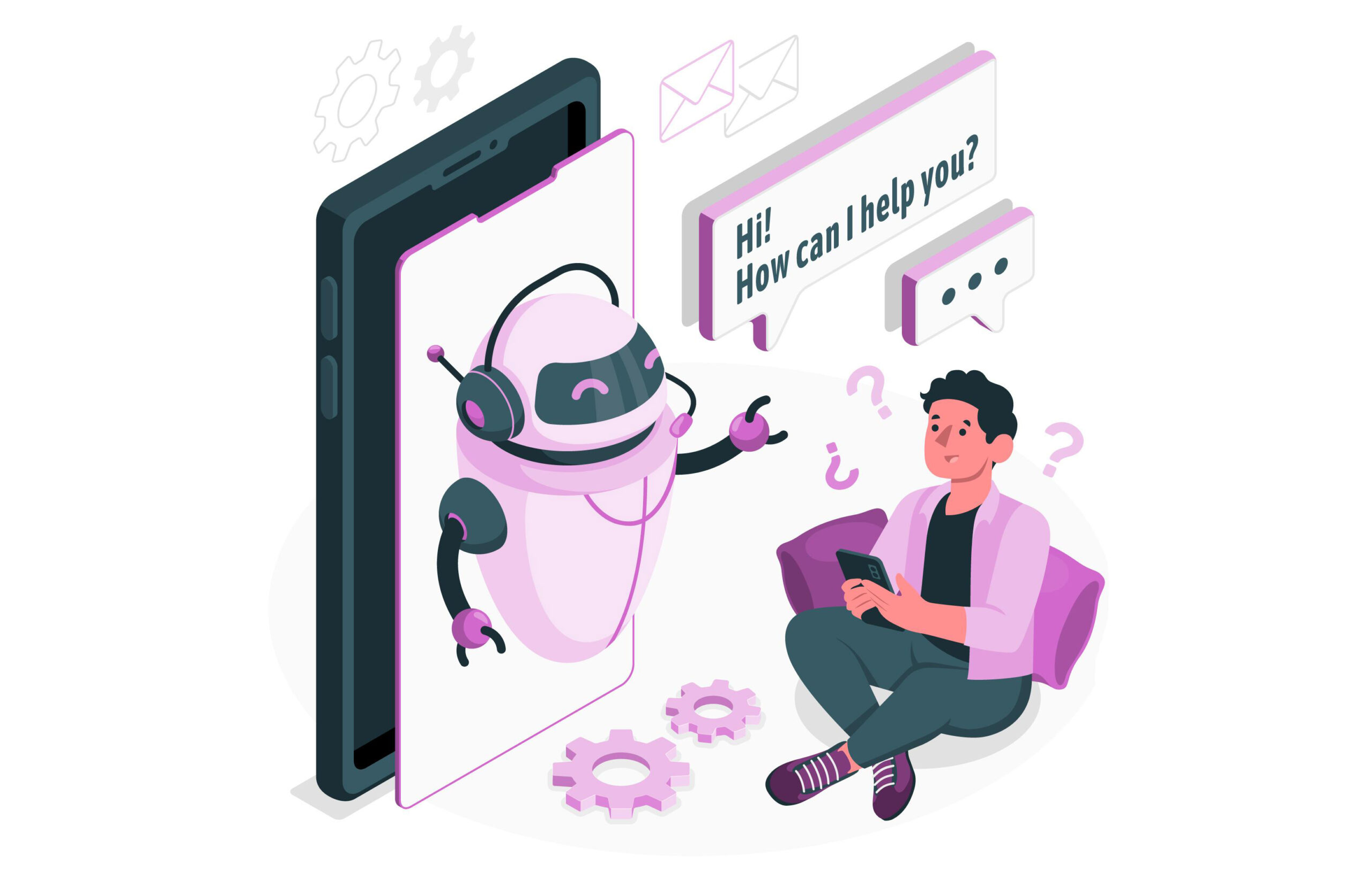The digital-only experience has reduced customer interaction to a minimum. People prefer to maintain personal engagement with businesses, and live chats are the best option to give them what they want.
With the help of live chat software, you can connect your customers to a helpful human who speaks to them like they, too, are another human being and not just a checklist of problems that need to be resolved. Talking to an agent in real-time has a 92% customer satisfaction rate, and helps you grow trust and gain loyalty amongst customers. In addition, by implementing custom chat features, a business can raise website conversion rates by about 38%.
Having said this, simply adding a chat feature to your business’ website won’t necessarily bear the expected fruit. You have to possess some knowledge of these systems and a plan in place to get them working for you. So, how can eCommerce stores design live chats to get their customers hooked?
1- Live chat widgets, plug-ins, javascript
Start by integrating chat software as a plug-in or widget directly with your website or apps. Some software providers simply give you a code you have to add in your javascript, and the live chat widget will automatically show up fully functional afterward. There are also website builder all-in-one builder solutions in which your chat is already integrated as a choice, so there’s no need to copy any code.
Furthermore, connect the devices you want to use. By installing the complimentary Voice over IP [VoIP] application that many software providers offer on a mobile device, you can ensure your customer service staff will be able to respond from anywhere.
2- Customize your design
Ensure the webchat you choose is fully customizable and allows for a branded experience to draw attention to your new service. Add a welcome message, your brand’s logo, and stylize your chat buttons on your web pages. Further, live chat software allows you to customize the chat window and header itself, and the automated reply window that will pop up when you’re offline.
Keep in mind that a website visitor bounces when they lose interest in the product. Webchat features with an eye-catching design, visible chat buttons, and chat boosters that offer help via pop-up windows can all help you to decrease bounce rates and renew interest in your products.
3- Set up your availability
Most startups or small businesses won’t have the resources to provide 24/7 customer service. To assess how many hours a day you should offer live chat, you need accurate statistics about your customer habits. For example, a Forbes study shows that the peak time most shoppers in the US are online is between 8 pm and 9 pm. By setting up automatic “away messages” and allowing customers to leave their contact details in visitor capture form, you let your customers know that their inquiries will be responded to the next day.
4- Integrate your live chat
Technical integration is critical, but integration is not purely technical. To demonstrate your new service offerings, involve them in your communication channels and marketing messages.
By adding a chat window to your landing page, you can increase customer engagement. However, if you prefer customers to access your chat next to FAQs on your support page, add the feature only to your support site, like US telco provider Verizon does. You can further divide your support offerings into various service categories. Your customer service team will then receive information about the type of inquiry handed to them before the line of communication with the customer officially begins. For example, Adobe separates their support between account and product support, as well as purchase interests. The company always ensures to have an expert on hand to answer precise questions.
Instead of using the regular call-to-action (CTA) that links to your website or sales, live chats allow you to engage with your client in a new fashion. You can connect your email newsletters with a simple: “Do you have a question? Let’s start chatting,” and enjoy outstanding results.
5- Integrate with email marketing
While you’re at it, why not ask your clients whether they would like to receive news and promotional material they might find interesting. Those customers may not purchase an item the same day, but you can drip-feed them engaging content to drive an eventual conversion further down the line.
After completing a live session, you can manually request contact details or ask the customer to sign up for your newsletters to increase your retention rate. The Swedish fintech unicorn Klarna offers live chat support for businesses and customers but only after customers make a profile. You can use this example to offer customer service only after users download your app or sign up for membership.
6- Run proactive messages
Over half of consumers say that they cannot resolve an issue independently because there is too little information online. Proactive messaging changes the whole customer support game – you can help the customer even before they ask for it. For example, when customers spend time on your FAQ page, you can activate a messaging feature that engages that particular individual automatically.
Suppose you are looking for a proactive messaging feature. Webchat integrations can send automated messages to page visitors, inviting them to join the conversation or to gather additional information on a product. If they take the bait, you can jump on a live chat within seconds and engage your customer. Interactive messaging can increase the chances of purchase about 2.8 times.
7- Improve your response time
By collecting data, you can elevate your customer service team to their highest potential. The first two valuable data points to analyze are first response time and average resolution time (measured by your live chat integration). Saving customers their time and effort increases the likelihood of repeat business and gives you an advantage over slow-response competitors.
The average response time businesses should seek to achieve is around 48 seconds. If you’re looking for an industry standard, the average time customers are willing to wait in a chat window before they disengage and click away is about two minutes. Your goal will always be that the person in charge of handling customer engagement consistently reduces response time and enhances information accuracy.
First of all, employees should know the products and company through and through. Precise insight and knowledge are essential for excellent service in the eyes of 62% of consumers. Other important qualities to look out for when hiring and training personnel are excellent communication, writing skills, and multitasking.
Chat software features can help the person in charge achieve a shorter response time. For example, if some questions are repetitive, the chat software can learn those questions and answer with pre-written responses. Other features show what the client is typing before sending the message. If your company has clients in several countries, direct translation features accelerate response time as well.
8- Measure customer satisfaction
However, speed is not everything – personal engagement should be another top priority. With a chat rating, businesses learn whether their chat responses sufficiently satisfy their customers or need improvement.
70% of consumers prefer human agents to an AI-powered response, as humans can empathize, respond actively, and give proactive support. Chat etiquette includes listening actively and empathizing with the customer’s problem. Let’s take the example of a business that rents furniture, and a page visitor is asking who is responsible in case of damage. If the customer service agent answers the question and provides this client a premium contract with full insurance, the communication exceeds expectations. As you’re getting to know your customer better, adopt their language and tone to theirs to let them know you’re listening.
For companies who do not have the budget for monthly staff training, there are plenty of online materials and articles that can help your team educate themselves further on their own.
9- Use other metrics to improve your overall marketing results
Metrics can be overwhelming, so which one should you always measure? Let’s go through examples of relevant statistics. Chat software allows you to see the impact of wait times, missed chats, conversion rates, and other relevant factors. Analytics will further enable you to analyze when customers abandon their shopping carts and send automatic messages to those shoppers. If you can’t afford a 24/7 live chat, knowing what times the site gets the most visitors allows you to offer virtual customer service exclusively during those times.
With integrated chat metrics, you can also check your staff’s performance. Examine changes in the average response time, best response practices, or how multitasking workflows work effectively. Lastly, set up talent development goals and rewards to prevent staff issues and drive their motivation to improve. For example, create a meritocratic bonus scheme for your employees gives you a chance to improve their performance.
10- Keep a human touch in a digitized world
Human customer service allows you to show a personal touch, personalize your page visitors’ experience and receive real-time feedback on your digital offers and information.
Live chats improve business success, but it can be challenging to launch a fully functional 24/7 software overnight. Our final advice is to roll out the service gradually and build out your live customer service over time – according to your customer service needs. With the right features at hand, you can easily test and evaluate your chat with customer and staff feedback and optimize it. From there, it’s just a stone’s throw away from satisfied clients.
.
.
This article is authored by Aleksandra Korczynska, Marketing Director at GetResponse, a comprehensive marketing software platform that helps users create content, boost sales, and increase traffic to their business online.

As CMO for GetResponse, she is guiding global SaaS marketing and growth. Driven by data analytics and growth hacking, she has crafted exceptional go-to-market strategies for global brands (ex-Uber) and tech startups alike.
She got her business and leadership education graduating from Harvard Executive Education and data-driven attitude in marketing from data science MA in Warsaw. Korczynska actively supports startups in the CEE region.












